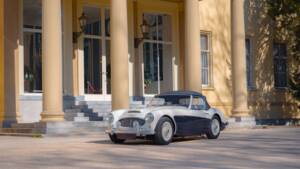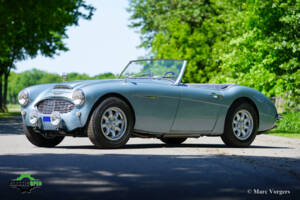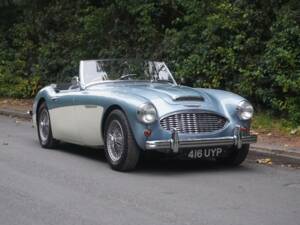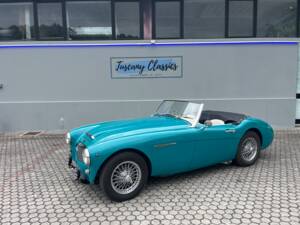- Car
- Austin-Healey
- Austin-Healey 100 (37 offers)
Austin-Healey 100 Classic Cars for Sale
The Austin-Healey 100 represents a milestone among British sports cars of the 1950s, defined by its distinctive engineering, raw mechanical appeal and a driving experience tailored for purists. Built from 1953 to 1956, the model offers an authentic snapshot of post-war British sporting ambition.
Search results
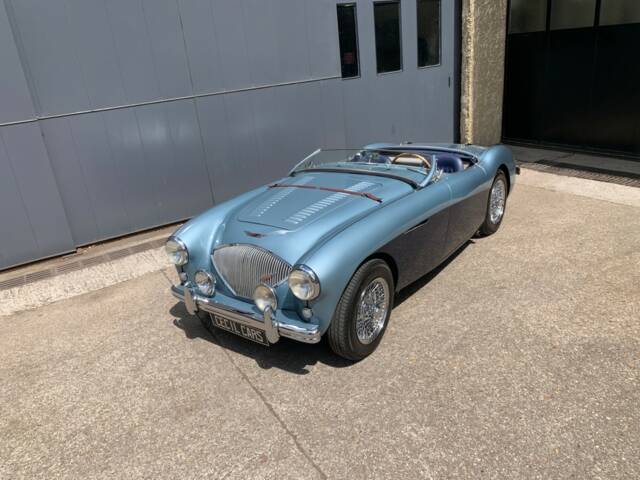

1959 | Austin-Healey 100/6 (BN6)
FIVA Identity Card
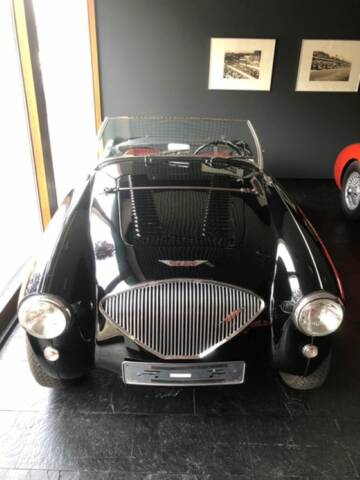
1954 | Austin-Healey 100/4 (BN1)
Mit LeMans-Kit und Scheibenbremse
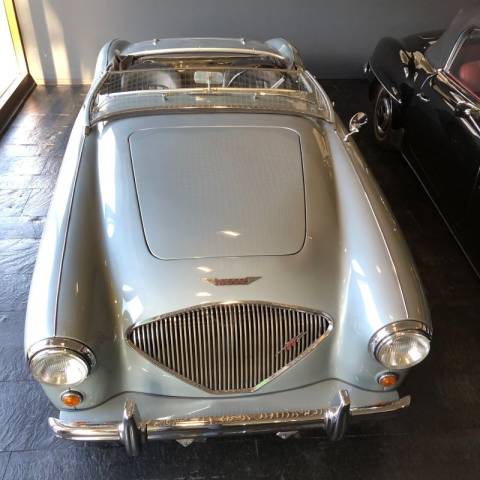
1954 | Austin-Healey 100/4 (BN1)
Seit 40 Jahren in Betreuung

1957 | Austin-Healey 100/6 (BN4)
Austin Healey 100-6


1958 | Austin-Healey 100/6 (BN6)
1958 Austin Healey 100/6
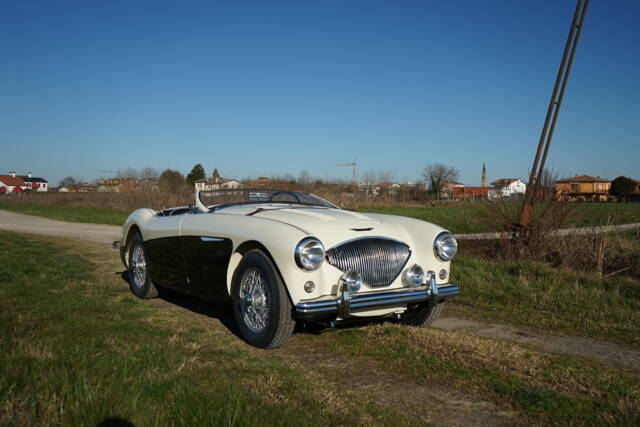
1956 | Austin-Healey 100/4 (BN2)
Eleggibile Mille Miglia
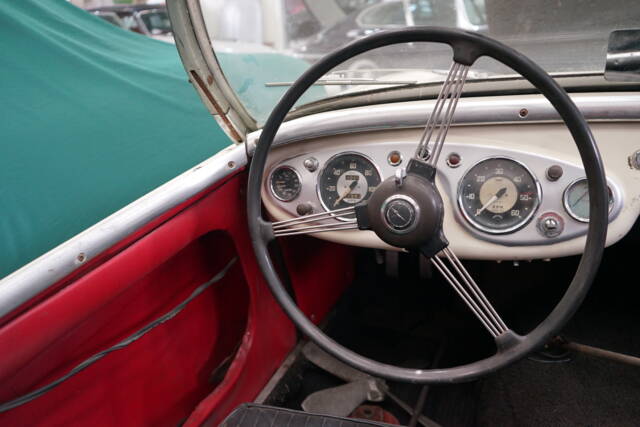
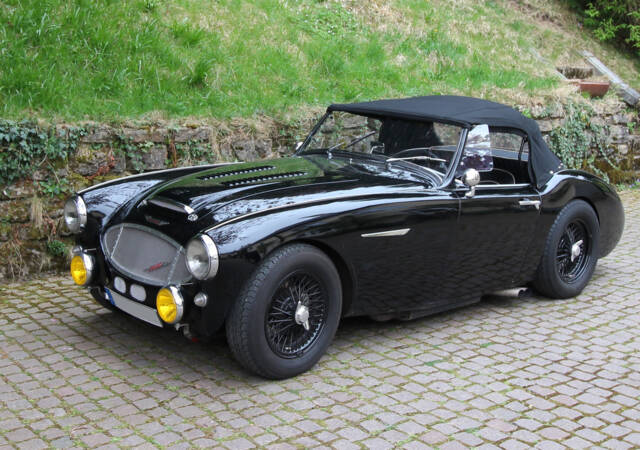
1957 | Austin-Healey 100/6 (BN4)
Leistungsgesteigertes Rallye- und Alltags- Fahrzeug in TOP Zustand
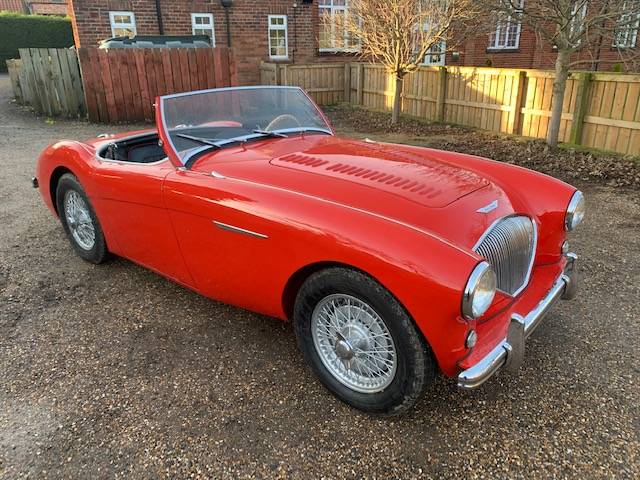
1954 | Austin-Healey 100/4 (BN1)
Restauration complète

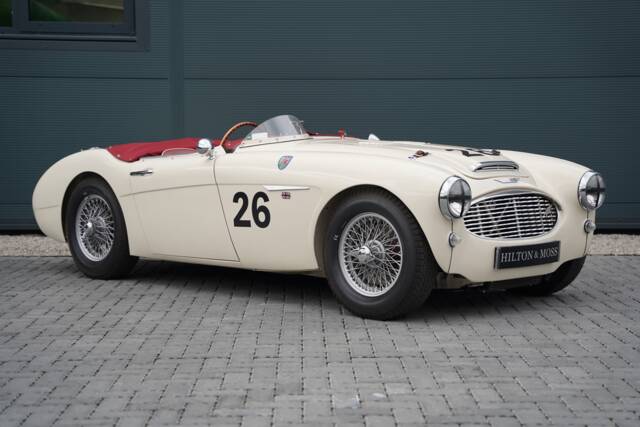
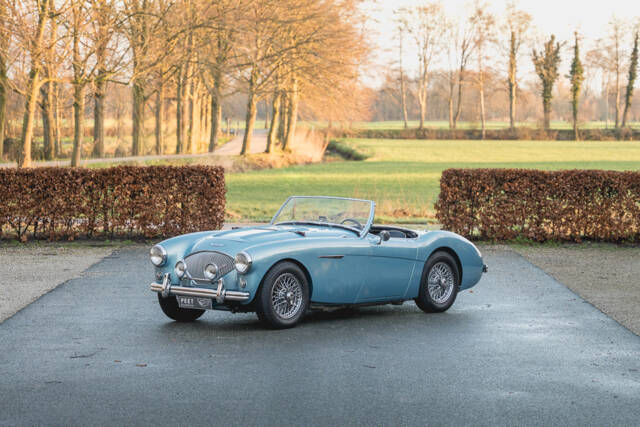
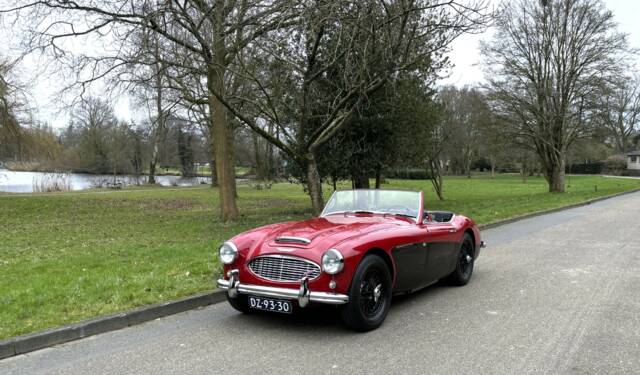
1959 | Austin-Healey 100/6 (BN4)
Restored 3000 central shift overdrive.
History of the Austin-Healey 100
Conceived through the partnership of Donald Healey and Austin’s Leonard Lord, the Austin-Healey 100 debuted at the 1952 London Earls Court Motor Show. The model's name derives from its ability to maintain a speed of 100 mph (160 km/h)—a rare feat during its era—delivering a direct response to the demand for accessible performance. Initial production started in 1953 at BMC’s Longbridge plant, with close ties to the Austin A90 Atlantic platform. By the time production ended in 1956, more than 15,800 units had been assembled, setting a new benchmark for affordable British sports cars and paving the way for the more refined 100/6 and, later, the Austin-Healey 3000.
Model History
The Austin-Healey 100 lineage began with the BN1 series (1953–1955), equipped with a 2.6-litre inline-four engine, three-speed manual gearbox (with optional overdrive) and rear-wheel drive. Over 10,000 BN1s were produced before the BN2 replaced it in late 1955, distinguished mainly by its improved four-speed manual gearbox and revised rear axle. The 100/6 succeeded the 100 in 1956, introducing a six-cylinder engine, longer wheelbase, 2+2 seating on the BN4, and further refinements to comfort and performance. All together, the 'Big Healey' range (100, 100/6, 3000) evolved incrementally while retaining the essential, driver-focused roadster philosophy.
Highlights and Features
Distinctive in both silhouette and engineering, the Austin-Healey 100 stood out for its honest, no-nonsense roadster design, weight-saving aluminium elements on special models, and wide export popularity, particularly in the US. The car’s original performance metrics—a top speed exceeding 100 mph, brisk acceleration figures, and tight, low-slung chassis—contributed to its reputation for agile, sporty handling. Period extras such as overdrive, spoked wheels, and a broad palette of factory colours (Healey Blue, Spruce Green, Gunmetal Grey, Carmine Red, etc.) provided owners with a breadth of personalisation options.
Technical Data
Special Editions and Collectible Models
Two particularly significant variants stand out: The Austin-Healey 100M ('Le Mans'), produced in around 640 units, featured an uprated engine (110 bhp) with special camshaft, larger carburettors and cold-air intake—designed for homologation and motorsport. The 100S, even rarer with about 50 cars built, was conceived for racing, boasting lightweight aluminium bodies, 132 bhp, disc brakes on all wheels, and minimal creature comforts. Both variants are highly valued by collectors due to their engineering pedigree and direct motorsport involvement.
Engine, Transmission & Driving Experience
The Austin-Healey 100 offers a direct, unfiltered driving experience. The robust 2.6-litre engine provides ample low-end torque, and the car's lightweight body results in sharp responses. Acceleration from 0–100 km/h comes in at around 10–11 seconds, while top speeds range between 100–115 mph depending on exact specification. Suspension is basic but purposeful: independent coil spring at the front, live axle at the rear with semi-elliptical leaf springs. Especially in BN2 and 100M/100S forms, the model benefits from improved gearbox ratios and power delivery, making these sought after for their enhanced dynamics. - BN1 (1953–1955): 2.6L I4, 3-speed, ca. 10,000 built, known for period originality.
- BN2 (1955–1956): 2.6L I4, 4-speed, about 4,600 units, more refined driving.
- 100M: 110 bhp, Le Mans kit, performance enhancements.
- 100S: Competition-focused, aluminium body, disc brakes, 132 bhp.
Interior, Comfort, Exterior and Design
Styling for the Austin-Healey 100 came from Gerry Coker, and defines 1950s British open sports car aesthetics: long bonnet, pronounced wheel arches, low-slung stance. Factory colours included Healey Blue, Gunmetal Grey, Carmine Red, and more. Interiors feature period-correct two-tone leather, classic wooden steering wheels, and minimalistic, driver-focused dashboards. Convertibles use classic soft tops, sometimes paired with tonneau covers and side screens. Factory options included adjustable steering columns, special windshields, and hardtops, providing further individuality. The design's purposeful minimalism, with practical touches for period road and motorsport use, set the template for the brand’s future models.
Other Relevant Features
Many Austin-Healey 100s are eligible for important historic events, including Mille Miglia, with vehicles often supplied with FIVA-Pass, BMIHT/Heritage Certificates and historic registration plates in Europe. The model’s simple mechanicals and robust construction have supported a thriving club scene and specialist network for parts, advice, and restorations. Restored examples are often accompanied by extensive documentation and original accessories. Support for classic motoring is strong thanks to active clubs and specialist suppliers.
Summary
The Austin-Healey 100’s unique mix of purposeful engineering, motorsport pedigree and expressive design places it among the most relevant 1950s British classic sports cars. With a complete support network, significant motorsport history, and robust market presence (as evident from current Classic Trader data), the Austin-Healey 100 stands out for drivers who demand authenticity, involvement and a direct connection with the spirit of post-war motoring.




